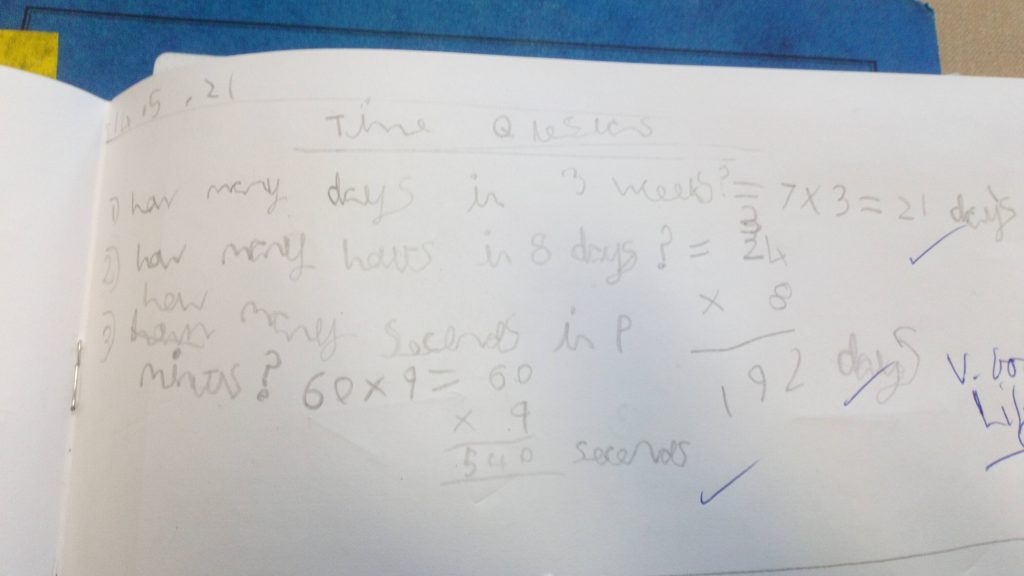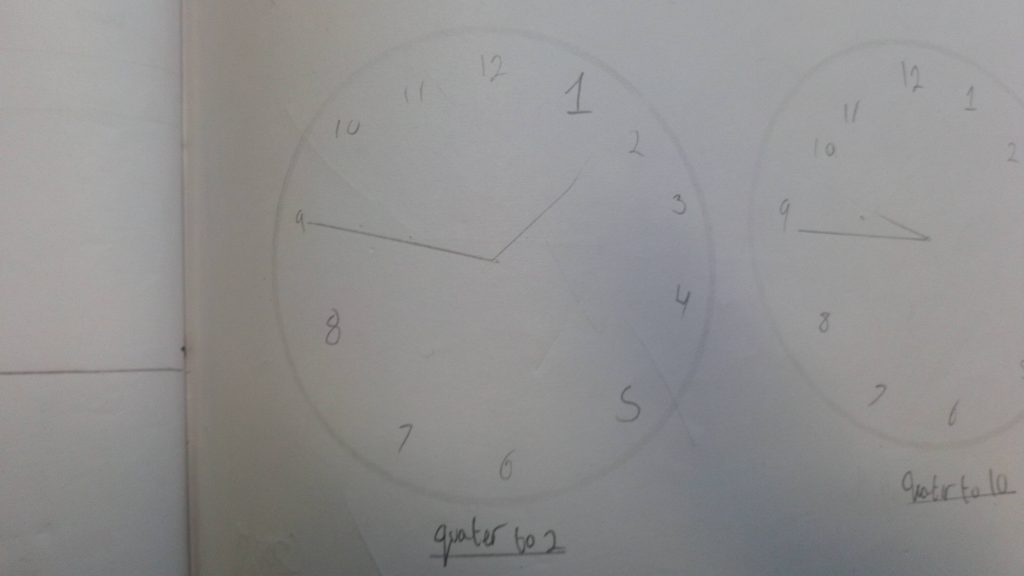For those of you who like regular posts, I must apologise for not being that regular at the minute! Life, as mentioned before, is always busy and so, currently, posts happen when they can! (Look out soon for the sign-up form that will enable you to be kept informed when a blog post has arrived.)
In my previous post I talked about the clock-test that can be used to test for dementia. Another source about the clock-test I found is here: https://academic.oup.com/ageing/article/27/3/399/17314.
So, when you look at the cognitive difficulties that adults with dementia suffer, it sheds some light on the cognitive development of children; the clock drawing activity showing what development is/has taken place. Why has the student not drawn the numbers at the edge of the circle?

One thing I wanted to get across to the students, at the start of my teaching, is that time is continuous; it does not stop. (I feel that this is really important, as just reading a digital clock does not actually allow an understanding of this.) I also tried to get some basic facts over to the students:

Some students were able to work with these facts:

Next time (part 3) I will talk about the practical approach I used to reinforce the students’ understanding.
Don’t forget, via supportforteachers.com, you can find out all about the online teacher training conference, Educating the 21st Century Student. I now have an additional workshop on Saturday 28th August, delivered by the very capable Sanjit Chimber. It’s all about maths activities for 16 to 19 year olds.
That’s it for now.
David
nilsbird training


